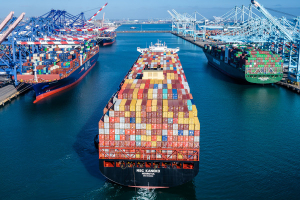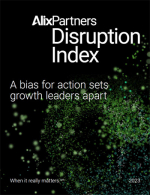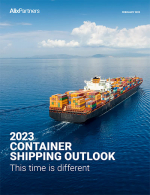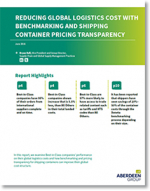2023 Container Shipping Outlook: This Time is Different
The days of maximum turmoil in the container shipping industry appear to have passed, but that doesn’t mean the market will return to the pre-pandemic status quo. the market’s fundamentals have shifted dramatically, with some formerly active trade lanes starting to fall from favor and others gaining volume and maintaining relatively high rates.
Container Shipping: Unaccustomed Financial Stability
The period from mid-2020 to the fourth quarter of 2022 was a high-water mark for the container shipping industry, and with it came unprecedented turmoil, disruption, and prosperity. That period was, above all, a period of extremes: extreme rate rises, extreme container and labor shortages, extreme delays, extreme congestion, and extreme chaos for exporters and importers alike.
For container ship operators themselves, it was an era of extreme revenues and extreme earnings. Thanks to those earnings, the container shipping industry, long known for its cyclical swings and volatile and precarious returns, is enjoying unaccustomed financial stability and with it, the luxury of choosing among a broad range of strategic options.
What's Ahead for the Container Shipping Market
The days of maximum turmoil in the container shipping industry appear to have passed, but that doesn’t mean the market will return to the pre-pandemic status quo.
The market’s fundamentals have shifted dramatically, with some formerly active trade lanes starting to fall from favor and others gaining volume and maintaining relatively high rates. Labor-market dynamics will reinforce some of the shifts in trade activity, while sharp expansion in carrier capacity will counteract any increases in demand.
Several trends will likely exert a strong pull on the future course of rates. They include the following:
- Dynamic Trade Flows
- Alliance Shake-Ups?
- Contract Season Dynamics
- An Upcoming Capacity Glut?
- Macroeconomic Forces
Implications for Stakeholders
Even as rates retreat and revenues moderate, stakeholders across the shipping value chain have opportunities to improve their competitive postures, optimize their operations and position themselves to outperform when the economic tide turns again.
Download this report and find out why shippers are insulating themselves from disruption by reconfiguring supply chains and moving key facilities closer to their home markets, and why middle-market players are refining their value propositions to help their customers mitigate supply chain risk.
What’s Related




Favorites





